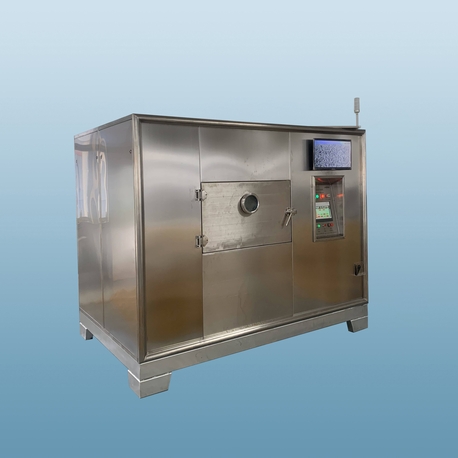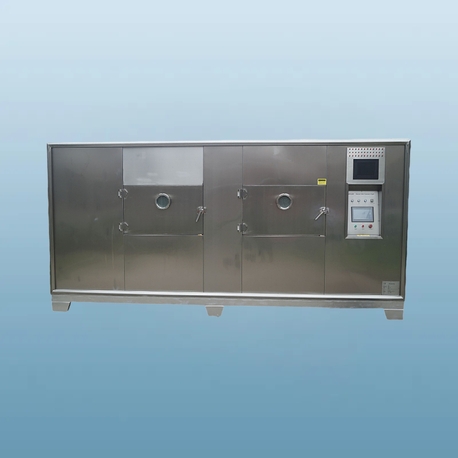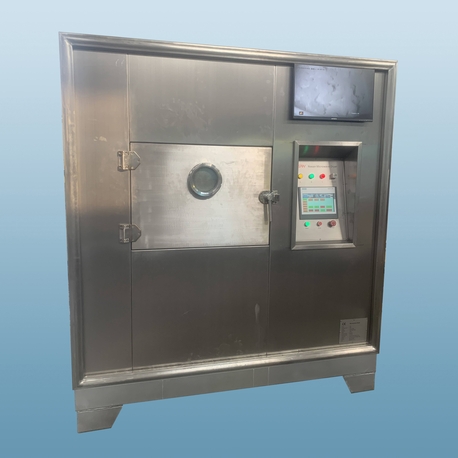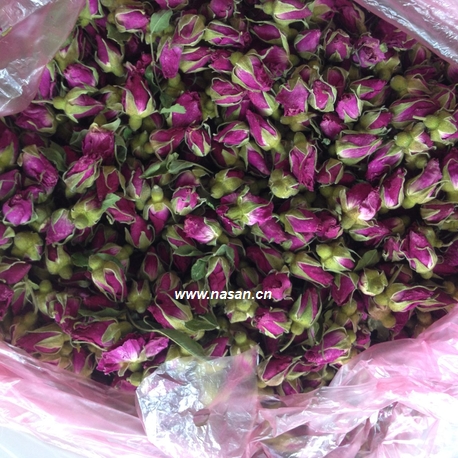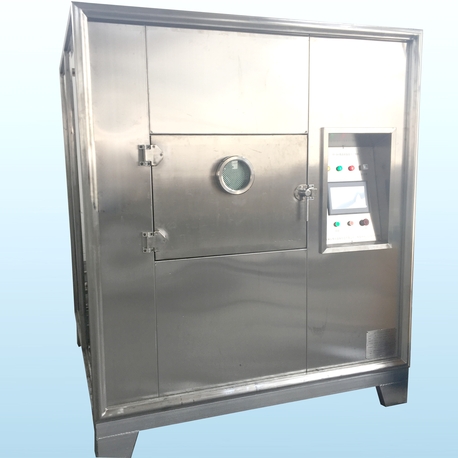In the competitive world of commercial floriculture and botanical processing, preserving the beauty, color, and potency of blooms is paramount. This is where the industrial flower dryer moves from being a luxury to an absolute necessity. For businesses that deal with large volumes of flowers—whether for the retail market, medicinal applications, or culinary uses—the right drying technology is the backbone of quality and shelf life. Unlike amateur methods, a professional-grade flower drying machine offers control, speed, and consistency that directly impact the bottom line. In this article, we'll explore how modern drying systems are revolutionizing the industry and why brands like Nasan are at the forefront of this transformation.

What is an Industrial Flower Dryer and How Does It Work?
At its core, an industrial flower dryer is a sophisticated piece of equipment designed to remove moisture from floral products efficiently and uniformly. It's a far cry from hanging bunches in a dusty attic. These machines create a controlled environment where temperature, humidity, and airflow are precisely managed.
The process typically involves:
Loading: Flowers are carefully arranged on trays or racks to ensure adequate air circulation around each bloom.
Program Setting: Operators input specific parameters based on the flower type, its initial moisture content, and the desired final product. This is where precision matters most.
Drying Cycle: Heated air is circulated throughout the chamber. The system continuously removes humid air, preventing mold and mildew while locking in color and structure.
Cooling & Unloading: Once the cycle is complete, some advanced systems include a cooling phase to stabilize the flowers before they are packaged.
This method ensures that delicate petals and potent compounds are preserved, which is critical for both aesthetic and functional end-products.
Key Applications: Beyond the Florist Shop
The use of commercial flower drying equipment spans several major industries:
Pharmaceutical & Nutraceutical Industry: For medicinal herbs and flowers like echinacea or calendula, preserving active ingredients is the primary goal. A consistent drying process for flowers is non-negotiable for product efficacy and compliance.
Food & Beverage Sector: Edible flowers, such as lavender for teas or hibiscus for infusions, require food-grade drying solutions that maintain flavor and are hygienic.
Cosmetics Industry: Flowers like rose and chamomile are key ingredients in lotions and serums. Their essential oils and colors must be preserved, which is only possible with gentle, controlled drying.
Large-Scale Floristry & Decor: Dried floral arrangements are a major trend. Commercial growers need to produce large batches of uniformly dried flowers to meet this booming market demand.
Choosing the Right Flower Drying Machine: 5 Key Considerations
Selecting the wrong industrial drying system can lead to ruined batches and financial loss. Here are the critical factors to evaluate:
Temperature Control Precision: Different flowers have different thermal sensitivities. The ability to maintain a tight temperature range is crucial. For instance, Nasan dryers are engineered with advanced thermostats for exact control.
Airflow Technology: Uniform airflow prevents the creation of "hot spots" that can burn some flowers while leaving others damp. Look for a system with a well-designed air distribution system.
Capacity and Scalability: Assess your current and future volume needs. Investing in a flower dryer that can grow with your business is a smarter long-term decision.
Energy Efficiency: Drying can be an energy-intensive process. Modern heat pump-based flower drying machines can significantly reduce operating costs compared to traditional electric or gas-fired models.
Durability and Ease of Maintenance: In an industrial setting, equipment must withstand continuous use. Stainless steel interiors and easy-to-clean components are standard in high-end models from manufacturers like Nasan.
The Nasan Advantage in Commercial Flower Drying
While many brands offer drying solutions, Nasan has built a reputation for reliability and innovation in the industrial drying space. Their flower dryer models are not just appliances; they are integrated solutions designed for the rigors of a production environment. By focusing on robust construction, intuitive controls, and energy-saving technologies, Nasan provides businesses with a tool that ensures product quality batch after batch. Their technical support and understanding of the botanical sector make them a trusted partner for growers and processors looking to optimize their post-harvest operations.
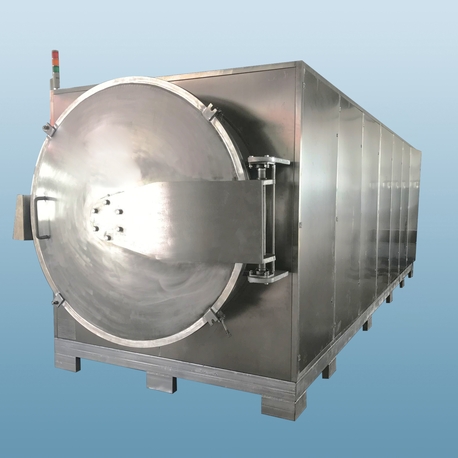
The Future of Flower Drying Technology
The evolution of the industrial flower dryer is leaning towards greater automation and smarter controls. We are seeing the integration of IoT (Internet of Things) sensors that can monitor the drying process in real-time and make micro-adjustments for perfect results every time. Furthermore, sustainability is becoming a key driver, with new systems focusing on recapturing heat and using renewable energy sources to power the flower drying process.
In conclusion, an industrial flower dryer is a critical investment for any serious player in the floral, botanical, or herbal industries. It transforms a variable and risky natural process into a reliable, scalable, and profitable operation. The control it offers over the final product's quality, safety, and appearance is simply unattainable through traditional methods. As technology advances, partnering with experienced manufacturers who understand these complex needs, such as Nasan, will be the key to staying competitive and meeting the evolving demands of the global market.
Frequently Asked Questions (FAQ) About Industrial Flower Dryers
Q1: What is the ideal temperature range for drying most types of flowers in an industrial dryer?
A1: The ideal temperature range varies significantly by species, but for many delicate ornamental and medicinal flowers, a lower range of 85°F to 100°F (30°C to 38°C) is recommended to preserve color, structure, and volatile compounds. Sturdier blooms may tolerate temperatures up to 110°F (43°C). A high-quality flower drying machine from a brand like Nasan allows for precise setting within this spectrum.
Q2: How long does a typical drying cycle take in a commercial flower dryer?
A2: Cycle time is not one-size-fits-all. It depends on the flower's initial moisture content, density, the set temperature, and the machine's airflow. A cycle can range from as short as 24 hours for delicate petals to several days for dense, moisture-rich flower buds. The goal of an efficient industrial drying system is to minimize this time without compromising quality.
Q3: Can these dryers handle other botanical materials besides flowers?
A3: Absolutely. Most industrial flower drying equipment is highly versatile and can be used to efficiently dry a wide range of botanicals, including herbs, leaves, certain barks, and even some fruits and vegetables, by adjusting the temperature and humidity settings accordingly.
Q4: What are the main energy consumption considerations for a flower dryer?
A4: The main factors are the heat source (heat pump models are most efficient), insulation quality, and the total runtime. Modern flower dryer units are designed to minimize energy waste. When selecting a machine, it's important to calculate the cost per batch based on its energy rating to understand the true operational expense.
Q5: How do I prevent mold growth during the drying process?
A5: Mold is prevented by maintaining a consistent, low-humidity environment inside the drying chamber. This is a core function of a professional flower dryer. The machine's exhaust system continuously removes moisture-laden air, while the uniform airflow ensures no stagnant, damp pockets form around the flowers, which is a common cause of mold in passive drying setups.


